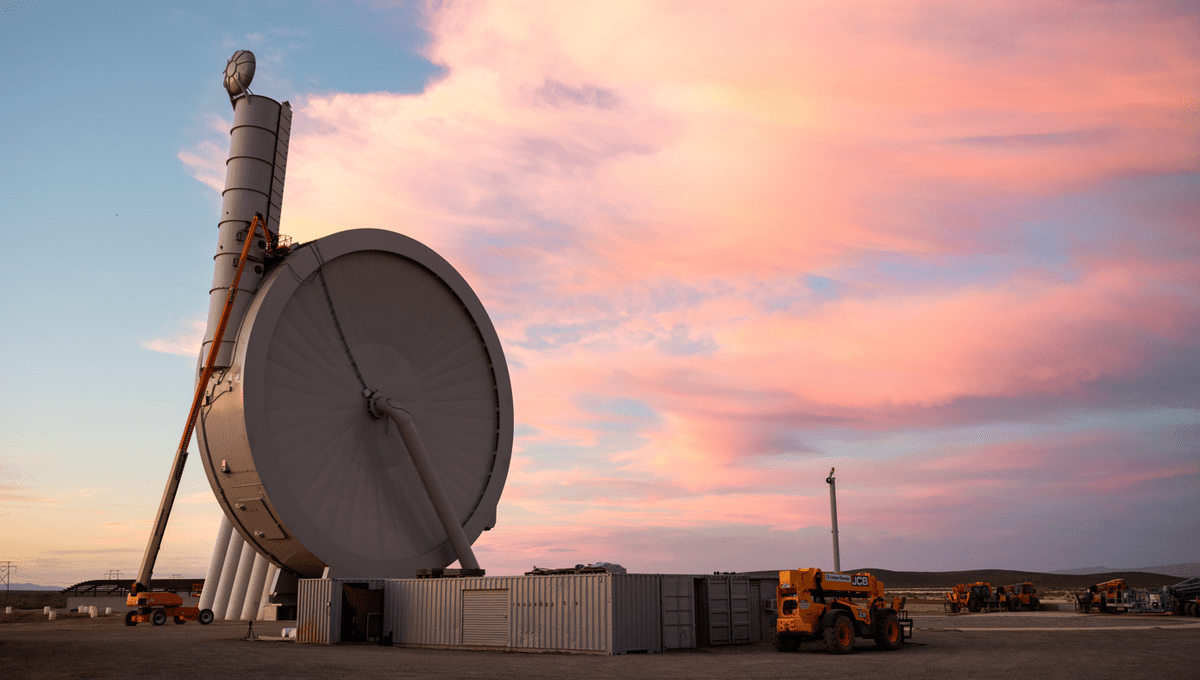
US-based startup SpinLaunch has teamed up with NASA and a number of other partners to see whether slingshotting objects into the sky could be a viable alternative to chemical-powered rocket launches.
Last week, SpinLaunch completed its tenth successful fling using their Suborbital Accelerator in the New Mexico desert. Their latest launch – which you check out below – saw the start-up fling a number of payloads owned by NASA, Airbus, Cornell University, and satellite delivery company Outpost.
Their chief aim was to see whether the sensitive scientific equipment onboard could survive the intense G-force of the Suborbital Accelerator.
This system essentially spins the object at approximately 8,046 kilometers (5,000 miles) per hour in a vertical 12-meter (39-foot) tall centrifuge. Once the object is up to speed, it’s flung out of the accelerator’s chimney and launched into the sky.
NASA’s payload featured a Data Acquisition Unit (DAQ) equipped with an array of sensors including two accelerometers, a gyroscope, a magnetometer, and sensors for pressure, temperature, and humidity. Upon landing, the DAQ was recovered and researchers will now sift through the data it gathered.
All in all, the mission proved successful, since all of the equipment withstood the hustle and bustle of a spinning sling-shot launch.
“Flight Test 10 represents a key inflection point for SpinLaunch, as we’ve opened the Suborbital Accelerator system externally for our customers, strategic partners, and research groups,” Jonathan Yaney, Founder & CEO of SpinLaunch, said in a statement.
“The data and insights collected from flight tests will be invaluable for both SpinLaunch, as we further the development of the Orbital Launch system, and for our customers who are looking to us to provide them with low-cost, high-cadence, sustainable access to space,” added Yaney.
This inventive system for payload launches has yet to send an object into orbit, although this is their ultimate goal. The company didn’t release any information about the altitude of this latest test run, but previous launches have seen objects reach heights of 7,620 meters (25,000 feet).
It might seem like a bit of zany ambition to launch objects into orbit using an astronomical slingshot in the desert. However, SpinLaunch’s novel launch method holds a clear advantage as requires less fuel and, in turn, costs less money per launch.
All being well, the start-up hopes to start offering customer orbital launches by 2025.
Source Link: Watch SpinLaunch's Giant Slingshot Fling A NASA Payload Into The Sky